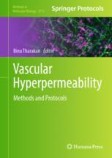Search
Search Results
-
Considerations for the optimization of in vitro models of chloropicrin toxicity
Chloropicrin (CP) is a common agricultural fumigant historically used as a chemical warfare agent and is a concern for potential use in warfare and...

-
Solar Radiation and Phototoxicity of Cosmetics: Avenues of In Vitro Skin Models
Skin is the body’s largest organ, performing several critical functions, including photoprotection and thermoregulation. The skin comprises three...
-
The development of in vitro organotypic 3D vulvar models to study tumor-stroma interaction and drug efficacy
BackgroundVulvar squamous cell carcinoma (VSCC) is a rare disease with a poor prognosis. To date, there’s no proper in vitro modeling system for VSCC...

-
Skeletal Muscle Satellite Cell Physiology and Function: Complimentary In Vitro and In Vivo Models and Methods
Skeletal muscle is a highly adaptable tissue, displaying features of hypertrophy (growth) and atrophy (loss), as a result of both internal and...
-
Optimize and Strengthen Machine Learning Models Based on in Vitro Assays with Mechanistic Knowledge and Real-World Data
The rapid development of in vitro assays for toxicity assessment has provided a tremendous opportunity to improve toxicity risk assessment by...
-
Empagliflozin attenuates intestinal inflammation through suppression of nitric oxide synthesis and myeloperoxidase activity in in vitro and in vivo models of colitis
Inflammatory bowel diseases (IBD) are characterized by chronic and relapsing inflammation affecting the gastrointestinal (GI) tract. The incidence...

-
Tumor Models of Retinoblastoma: In Vivo, Ex Vivo, and In Vitro Models
In the initial simplistic understanding, childhood retinal cancer retinoblastoma is due to the defect in the retinoblastoma gene. However, the deep...
-

-
Glabridin reduces neuroinflammation by modulating inflammatory signals in LPS-induced in vitro and in vivo models
ObjectivesChronic neuroinflammation has become one of the important causes of common neurodegeneration disease. Therefore, the target of this study...

-
In vitro assessment of thyroid peroxidase inhibition by chemical exposure: comparison of cell models and detection methods
Disruption of the thyroid hormone (TH) system is connected with diverse adverse health outcomes in wildlife and humans. It is crucial to develop and...

-
In Vitro and In Vivo Models for Metastatic Intestinal Tumors Using Genotype-Defined Organoids
It has been established that the accumulation of driver gene mutations causes malignant progression of colorectal cancer (CRC) through positive...
-
Activation of HCA2 regulates microglial responses to alleviate neurodegeneration in LPS-induced in vivo and in vitro models
BackgroundPrevious studies have shown a close association between an altered immune system and Parkinson's disease (PD). Neuroinflammation inhibition...

-
Cell-Based Intestinal In Vitro Models for Drug Absorption Screening
Despite major innovations in drug administration, oral intake remains the preferred route for drug delivery, mainly due to ease of administration and...
-
In Vitro Models of Astrocytes: An Overview
Astrocytes are the most abundant cell type in the brain. In recent years, astrocytes have been demonstrated to be important for the physiological...
-
Studying Angiogenesis Using Matrigel In Vitro and In Vivo
Angiogenesis plays a critical role in physiology and pathophysiology of the human body; hence, it is important to explore the methods to study...
-
Transcriptomic-based evaluation of trichloroethylene glutathione and cysteine conjugates demonstrate phenotype-dependent stress responses in a panel of human in vitro models
Environmental or occupational exposure of humans to trichloroethylene (TCE) has been associated with different extrahepatic toxic effects, including...

-
Next-generation in vitro blood–brain barrier models: benchmarking and improving model accuracy
With the limitations associated with post-mortem tissue and animal models, In vitro BBB models enable precise control of independent variables and...

-
Towards best use and regulatory acceptance of generic physiologically based kinetic (PBK) models for in vitro-to-in vivo extrapolation (IVIVE) in chemical risk assessment
With an increasing need to incorporate new approach methodologies (NAMs) in chemical risk assessment and the concomitant need to phase out animal...

-
Validating MRI-Derived Myocardial Stiffness Estimates Using In Vitro Synthetic Heart Models
Impaired cardiac filling in response to increased passive myocardial stiffness contributes to the pathophysiology of heart failure. By leveraging...

